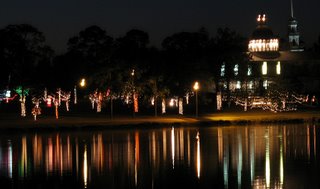 Reflection from across the lake Reflection from across the lake | |
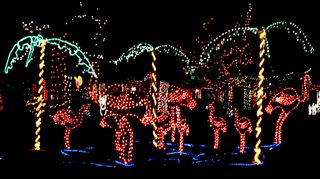 Palm trees and Pink Flamingos Palm trees and Pink Flamingos | |
 Cat sleeping in front of the fireplace Cat sleeping in front of the fireplace | |
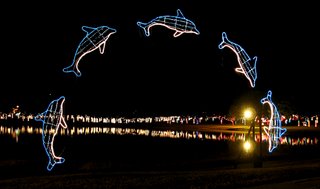 Leaping fish Leaping fish | View from across the lake |
 Reflection from across the lake Reflection from across the lake | |
 Palm trees and Pink Flamingos Palm trees and Pink Flamingos | |
 Cat sleeping in front of the fireplace Cat sleeping in front of the fireplace | |
 Leaping fish Leaping fish | View from across the lake |
The next day was much better we when to Fort Macon, a quick History:
Construction of the fort began in 1826, it is a five-sided structure of brick and stone with twenty-six vaulted casements (rooms) with outer walls that are 4.5 feet thick, it was part of the chain of coastal fortifications for national defense. Its purpose was to guard Beaufort Harbor, North Carolina's only deepwater ocean port. It was named after state senator Nathaniel Macon, who procured the funds to build the facility. During its history it has seen Robert E Lee as an Army engineer, seized by the N. Carolina militia, retaken by Union forces to be used as a coal fueling station for the navy, a federal prison, closed in 1903, sold to the state of North Carolina to be used as a state park, restored by the Civilian Conservation Corps and then leased back to the military to be used during World War II.
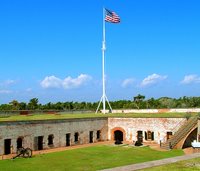
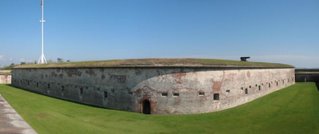
When we left here to head south we drove past Camp Lejeune, for about four miles the road was lined with huge home made signs welcoming home the different soldiers and units, was really kind of neat.
We stayed in Myrtle Beach for a week and did a drive north along the coast to Southport, while we were in the area we followed a few signs and found the Ghost of Brunswick Town, located on the banks of the Cape Fear River it was a British colony started in 1726. It was a major shipping port for the British until the colonist rebelled against the Crowns authority of tax stamps; this was eight years before they did it in Boston with the Boston Tea Party. In 1776 the British raided the town and burnt it to the ground. All that is left now are the foundations of about 50 different homes and buildings and the walls of the St. Phillips Anglican Church. Some of the town in on Army property (Sunny Point Army Base) and not assessable.
This is also the site of Fort Anderson built by the C.S.A. 1861 to defend the city of Wilmington; the fort was a large sand fortification with ten cannons. Today only the outer mounds of the fort remain.

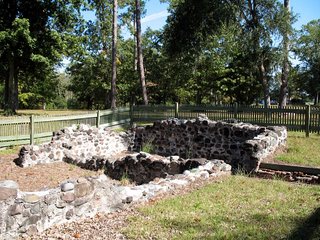



Descendants of the original family still reside at this site and are actively involved in heritage preservation at Wormsloe. There is a ton of history here but way too much to go into.
Onward to St Mary’s Georgia right on the Florida boarder were we had a ton of things planned to do, that is until I twisted my back, so this week ended up being Chiropractors, pain pills and rest.
 Click picture to enlarge
Click picture to enlarge